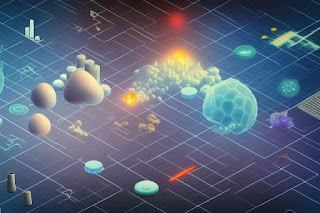The modern top health threats can vary depending on various factors such as location, lifestyle, and individual health conditions. However, some common health threats have emerged in recent years globally.
Why are health problems increasing?
Health problems increase because of behaviors such as alcohol, tobacco, and drug use. The behaviors affect healthiness and worsen mortality rates. Also, environmental conditions such as poor air, water, and food quality. Low immunization rates, likely lead to diseases being spread to the vulnerable.
Here are some of the modern top health threats:
1. Chronic diseases: Chronic diseases such as heart disease, stroke, cancer, respiratory diseases, and diabetes are some of the leading causes of death worldwide. These diseases are often linked to unhealthy lifestyles, including poor diet, lack of physical activity, tobacco use, and excessive alcohol consumption.
2. Obesity: Obesity has become a major public health concern in many countries. It increases the risk of various chronic conditions such as heart disease, diabetes, certain cancers, and musculoskeletal disorders. The rise in sedentary lifestyles, poor nutrition, and high-calorie diets contribute to the increasing prevalence of obesity.
3. Mental health disorders: Mental health issues such as depression, anxiety, and stress-related disorders are on the rise. Factors like work-related stress, social isolation, financial pressures, and the fast-paced modern lifestyle contribute to the increase in mental health problems.
4. Infectious diseases: Despite advancements in medicine, infectious diseases continue to pose a threat globally. Emerging infectious diseases like Zika virus, Ebola, and COVID-19 have highlighted the need for robust public health systems and effective disease control measures.
5. Antibiotic resistance: The misuse and overuse of antibiotics have led to the rise of antibiotic-resistant infections. Antibiotic resistance is a growing global health concern, making it challenging to treat common infections and increasing the risk of complications and mortality.
6. Environmental factors: Environmental factors such as air pollution, water contamination, and climate change have a significant impact on human health. These factors contribute to respiratory diseases, cardiovascular problems, and other health issues.
7. Substance abuse: Substance abuse and addiction to drugs and alcohol have severe health consequences. They not only harm physical health but also lead to mental health problems, social issues, and an increased risk of accidents and injuries. It is important to note that these health threats are not exhaustive, and the prevalence and severity may differ based on geographical location and individual circumstances. Public health initiatives, education, and lifestyle modifications play a crucial role in addressing and mitigating these health threats.
What to do to address modern health threats
To address modern health threats, here are some steps that can be taken:
1. Prioritize prevention: Emphasize the importance of preventive measures such as vaccinations, regular health check-ups, and health education. Promote healthy lifestyle habits like regular exercise, balanced nutrition, and stress management.
2. Strengthen healthcare systems: Invest in healthcare infrastructure, improve access to quality healthcare, and ensure adequate resources for disease surveillance, diagnosis, and treatment. Develop robust emergency response systems and stockpile necessary medical supplies.
3. Enhance global cooperation: Collaborate with international organizations, governments, and healthcare professionals to share information, research, and resources. Foster cooperation in developing vaccines, treatments, and diagnostic tools for emerging diseases.
4. Promote research and innovation: Encourage scientific research to understand the causes and mechanisms of modern health threats. Support innovations in technology, diagnostics, and treatments to effectively respond to emerging diseases or health challenges.
5. Improve data collection and analysis: Establish comprehensive and centralized systems for collecting, analyzing, and sharing health-related data. Utilize advanced technologies like artificial intelligence and big data analytics to identify trends, predict outbreaks, and develop targeted interventions.
6. Strengthen public health infrastructure: Invest in public health infrastructure, including robust surveillance systems, well-equipped laboratories, and a trained public health workforce. Strengthen communication networks to disseminate accurate and timely information to the public.
7. Raise public awareness: Educate the public about modern health threats and promote healthy behaviors. Use various communication channels to disseminate accurate information, debunk myths, and encourage adherence to preventive measures. Emphasize the importance of individual responsibility in maintaining personal and public health.
8. Address social determinants of health: Recognize and address the social, economic, and environmental factors influencing health outcomes. Work towards reducing health disparities and inequalities to ensure equitable access to healthcare and resources for all populations.
9. Prepare for emergencies: Develop robust emergency preparedness plans and conduct regular drills to ensure a prompt and coordinated response to health crises. Establish mechanisms for early detection, notification, and rapid response to outbreaks.
10. Engage multiple stakeholders: Involve governments, healthcare providers, researchers, community leaders, NGOs, and individuals in collaborative efforts to address modern health threats.
Foster partnerships to pool resources, expertise, and efforts for a comprehensive response. By implementing these strategies, it is possible to address modern health threats effectively and safeguard public health in the face of emerging diseases or other health challenges.
References
Ryu, S., Kim, B. I., Lim, J. S., Tan, C. S., & Chun, B. C. (2017). One Health Perspectives on Emerging Public Health Threats. Journal of preventive medicine and public health = Yebang Uihakhoe chi, 50(6), 411–414. https://doi.org/10.3961/jpmph.17.097
WHO. Ten threats to global health in 2019.
https://www.who.int/news-room/spotlight/ten-threats-to-global-health-in-2019
Catherine Lo Yuk-ping, Nicholas Thomas, How is health a security issue? Politics, responses and issues, Health Policy and Planning, Volume 25, Issue 6, November 2010, Pages 447–453, https://doi.org/10.1093/heapol/czq063
Brown, G.W., Bridge, G., Martini, J. et al. The role of health systems for health security: a scoping review revealing the need for improved conceptual and practical linkages. Global Health 18, 51 (2022). https://doi.org/10.1186/s12992-022-00840-6




Thank you for reading!